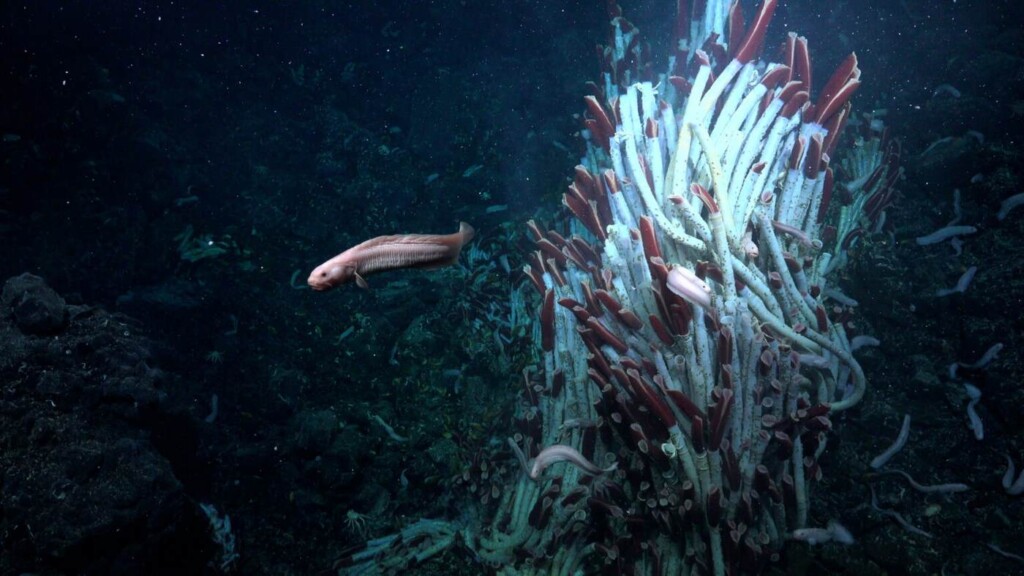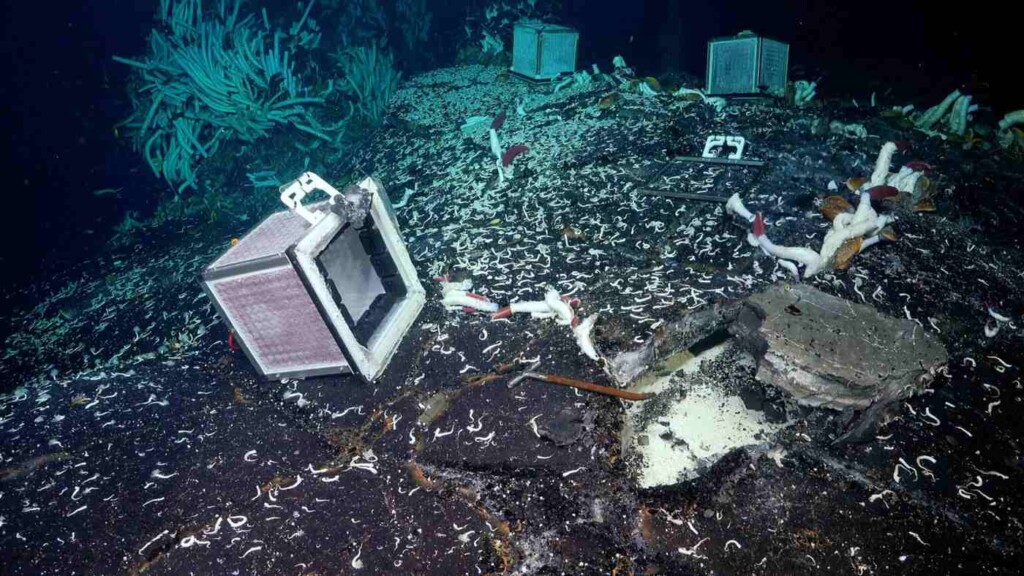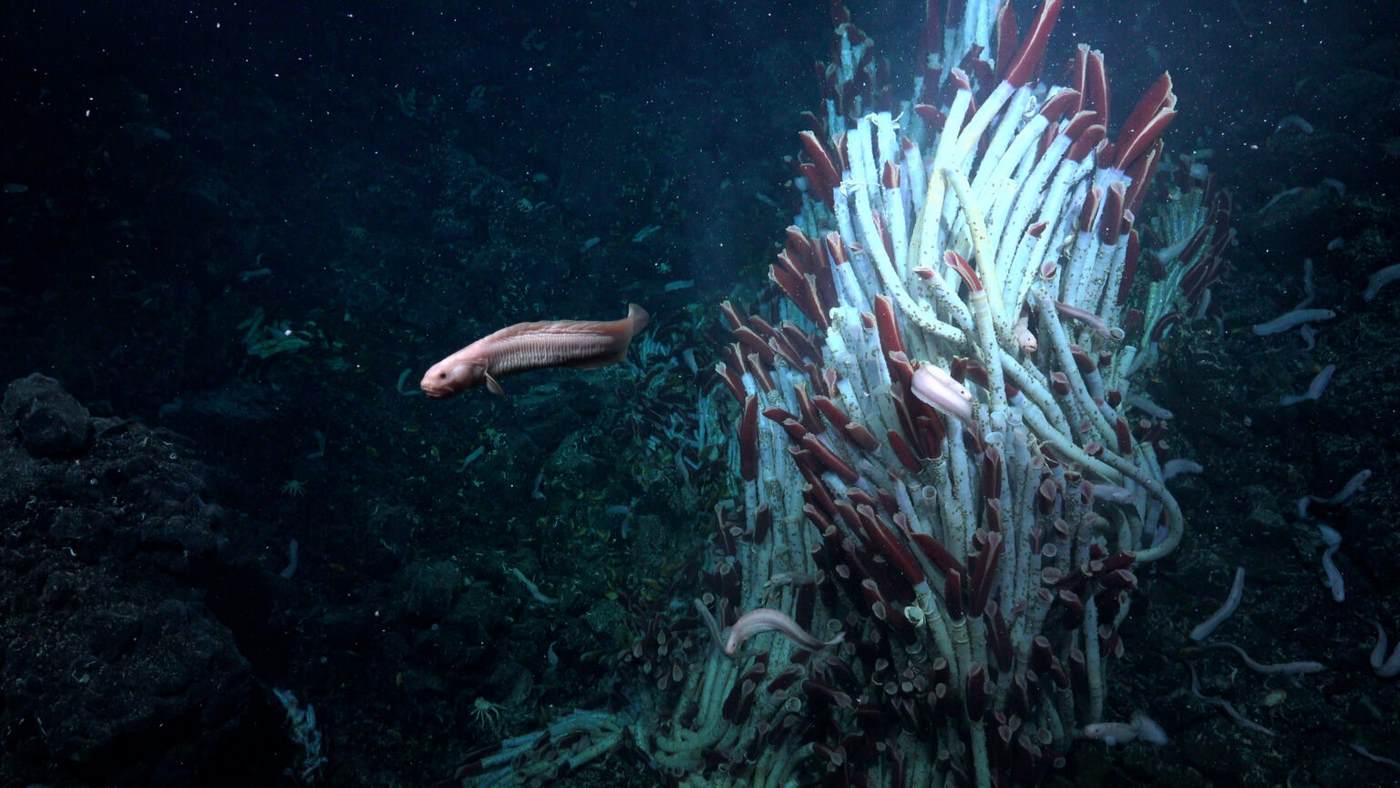
Exploration and mapping of deep-sea life has come on in leaps and bounds over the last two decades, and the discoveries have been worth their weight in gold—like this new finding from the Schmidt Ocean Institute of life beneath undersea volcanic vents.
At a well-studied undersea volcano on the East Pacific Rise off Central America, an international team of marine biologists and oceanographers have discovered ecosystems of worms, snails, and bacteria living underground, under the seafloor.
Using an underwater robot, the science team overturned chunks of volcanic crust and discovered these narrow cave systems. Animals enter and exit them freely, adding a new dimension to hydrothermal vents, showing that their habitats exist both above and below the seafloor.
“On land we have long known of animals living in cavities underground, and in the ocean of animals living in sand and mud, but for the first time, scientists have looked for animals beneath hydrothermal vents,” says the institute’s executive director, Jyotika Virmani.
“This truly remarkable discovery of a new ecosystem, hidden beneath another ecosystem, provides fresh evidence that life exists in incredible places.”
Hydrothermal vents are fascinating underwater hotspots of life. As corals are the foundational creature of reefs, tube worms are a foundational species on the vents. However, their young have never been seen on the vents themselves, leading some scientists to hypothesize that they travel beneath them to reproduce.
To determine if the worms or other animals travel through vent fluids, the science team used Schmidt Ocean Institute’s underwater robot, ROV SuBastian, to conduct experiments by gluing mesh boxes over cracks in the earth’s crust. A non-toxic red pigment was released into the mesh box that colored all the animals inside.

When the boxes were removed after several days along with the crust they saw that animals living below the surface in hydrothermal cavities emerged and could be seen uncolored.
The discovery is reminiscent of other surveys of life in the deep places of the sea to which few people travel.
Undersea volcanoes off of Australia’s Cocos Keeling Islands were recently surveyed for life, and all manner of wild and wonderful species were discovered there.
Deep sea coral reefs are not well understood, and one was recently found 2,000 feet down in the Galapagos Islands marine protected area that was teeming with life.
In 2020, the British Antarctic Survey sent a submersible down beneath the Antarctic shelf and instantly counted 36 species new to science living on a single boulder.
“The discoveries made on each Schmidt Ocean Institute expedition reinforce the urgency of fully exploring our ocean so we know what exists in the deep sea,” said Wendy Schmidt, president and co-founder of Schmidt Ocean Institute. “The discovery of new creatures, landscapes, and now, an entirely new ecosystem underscores just how much we have yet to discover about our Ocean–and how important it is to protect what we don’t yet know or understand.”
WATCH the great video footage from the survey below…
SHARE This Beyond-Fascinating Deep-Sea Science With Your Friends…




















